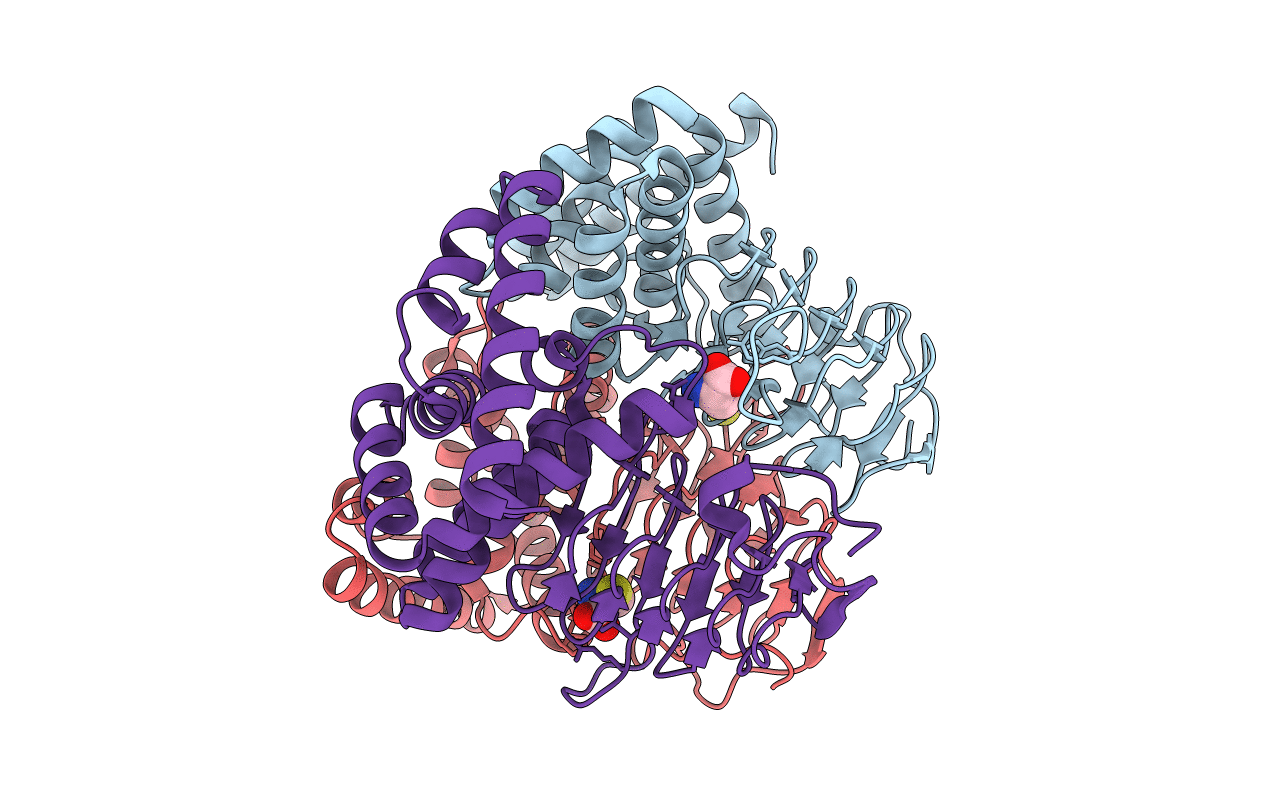
Deposition Date
2004-04-26
Release Date
2004-07-13
Last Version Date
2024-10-30
Entry Detail
PDB ID:
1T3D
Keywords:
Title:
Crystal structure of Serine Acetyltransferase from E.coli at 2.2A
Biological Source:
Source Organism:
Escherichia coli (Taxon ID: 562)
Host Organism:
Method Details:
Experimental Method:
Resolution:
2.20 Å
R-Value Free:
0.17
R-Value Work:
0.15
R-Value Observed:
0.17
Space Group:
P 32 2 1


